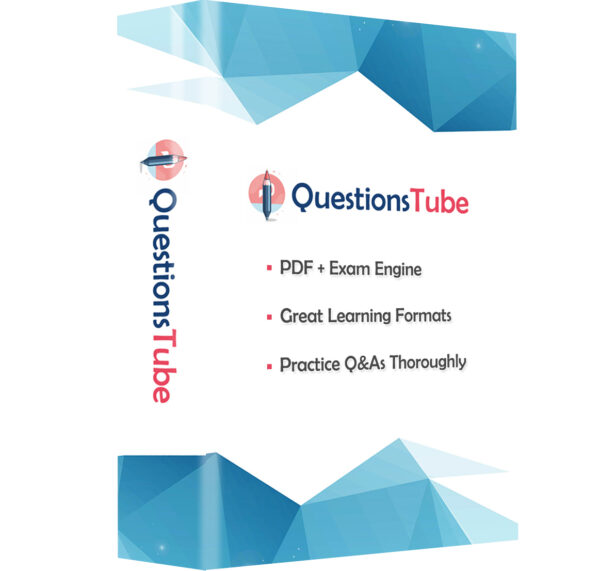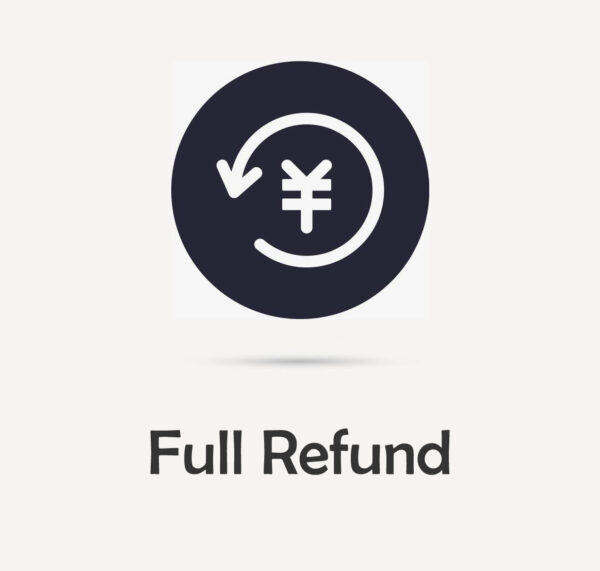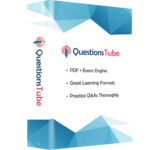Order our MuleSoft Platform Architect I Practice Questions Today and Get Ready to Pass with Flying Colors!
Product Description
Introduce Salesforce MuleSoft Platform Architect I Exam
The Salesforce Certified MuleSoft Platform Architect I certification, formerly known as the MuleSoft Certified Platform Architect – Level 1 exam, is now part of the Salesforce Architect certification program after a shift from the MuleSoft certifications. It’s tailored for individuals who have experience defining and being responsible for an organization’s Anypoint Platform strategy. As a certified professional, you will be able to direct the emergence of an effective application network out of individual integration solutions following application programming interface (API)-led connectivity across an organization using the Anypoint Platform.
Learning MuleSoft Platform Architect I Exam Objectives Is Strongly Recommended
- Identify and differentiate between technologies typically used to implement API-led connectivity.
- Describe the role and characteristics of web APIs.
- Correctly assign APIs to tiers according to ownership, functional focus, and rate of change.
- Describe the capabilities and high-level components of the Anypoint Platform.
- Advise on establishing a Center for Enablement (C4E) and identify key performance indicators (KPIs) to measure its success.
- Describe the high-level structure and benefits of MuleSoft Catalyst.
- Compare and contrast Identity Management and Client Management options on the Anypoint Platform.
- Identify data residency of different kinds of data (payload, metrics, and others).
- Identify dependencies between an API, its API specification, its implementation, and its clients.
- Describe the creation and publication of reusable API-related assets using API specifications and Anypoint Platform components.
- Identify changes to an API that would require or not require changing the major/minor/patch component of its semantic version.
- Given a specific power relationship between two Bounded Contexts, choose the most appropriate strategy for mapping between the API data models of these Bounded Contexts.
- Identify idempotent HTTP methods and HTTP-native support for optimistic concurrency.
- Recognize the important features and functionality of API Designer to design API specifications.
- Identify appropriate APIs to implement a business process and assign them to layers of API-led connectivity.
- Assign APIs to layers according to ownership, functional focus, and rate of change.
- Recommend the most appropriate approach relating the API data model of System APIs to that of their backend system based on specific requirements and organizational characteristics.
- Make appropriate use of API instances and environments in API Manager, taking into account the nature of the API and the underlying data and system.
- Select appropriate API policies and other components of the API to support specific non-functional requirements (NFRs).
- Identify any change(s) required to an API specification to reflect the application of an API policy with specific characteristics.
- Select an approach to API policy enforcement based on specific preferences and constraints, including, but not limited to, API proxies/API gateways and Anypoint Service Mesh.
- Secure web APIs using API policies appropriately chosen for the API’s tier (System, Process, Experience).
- Describe in what circumstances and how to pass client ID and secret to a web API.
- Explain how to request access to an API version for an API client, and how that access is approved and revoked.
- Select appropriate API policies to enforce non-functional security constraints on web API invocations.
- Explain the relationships of the Anypoint Platform, external Identity Providers (IdPs), AP Business Groups, and API clients in the context of OAuth 2.0.
- Identify scenarios needing custom API policies.
- Explain how to use auto-discovery to link a web API implementation to an API instance managed with API Manager.
- Identify requirements that call for the use of an Anypoint Virtual Private Cloud (VPC).
- Compare and contrast options for hosting and managing Anypoint Platform runtime planes.
- Compare unit and integration tests and specify where MUnit is best employed.
- Explain options for automated building, testing, and deployment of API implementations and related artifacts in a DevOps setting.
- Describe the scenarios for which Object Store (OS) should be used with CloudHub.
- Select CloudHub worker sizes and configurations as appropriate.
- Given an app deployed to the CloudHub shared worker cloud in one or more regions, describe and predict its reliability and performance characteristics.
- Identify the defining differences between the CloudHub Shared and Dedicated Load Balancers.
- Compare and contrast the options for CloudHub networking in the presence of customer-owned Amazon VPCs and on-premises data centers.
- Identify and avoid single points of failure in CloudHub deployments of API implementations.
- Design, describe, and differentiate between scenarios that use an OS or caching.
- Select resilience strategies that help web API clients guard against failures when invoking APIs.
- Describe when horizontal scaling of an API implementation is or is not likely to benefit response time and throughput as seen by API clients.
- Identify the components of the Anypoint Platform that generate data for monitoring and alerting.
- Describe the metrics collected by Anypoint Platform for API invocations.
- Specify alerts to define key metrics of API invocations for all layers of API-led connectivity.
- Specify alerts to define for Mule applications.
How can you prepare for the MuleSoft Platform Architect I exam? One of the best ways is to use MuleSoft Platform Architect I practice questions on QuestionsTube.
Our MuleSoft Platform Architect I Practice Questions include:
– MuleSoft Platform Architect I exam questions and answers: These are the most updated and accurate questions and answers that reflect the real exam content and format. You can practice them online or offline, and check your answers with detailed explanations.
– MuleSoft Platform Architect I exam questions pdf: It is the most valid and effective pdf file that contains the actual exam questions and answers. You can download it and use it to read all the questions and answers anytime and anywhere.
– MuleSoft Platform Architect I ICE exam engine: This is a powerful tool that simulates the real exam environment and allows you to test your knowledge and skills under time pressure. You can customize your exam mode, difficulty level, question type, and number of questions.
– MuleSoft Platform Architect I free update: This is a great advantage of QuestionsTube’s MuleSoft Platform Architect I exam questions. You can choose the free update privilege to make sure that you will always have the latest study materials in a valid period.
By using our MuleSoft Platform Architect I exam materials, you can:
– Save your time and money: You don’t need to spend hours searching for other sources or paying for expensive courses or books. Our MuleSoft Platform Architect I exam materials are enough to prepare you for the exam.
– Enhance your confidence and performance: You can familiarize yourself with the exam format and content, and improve your speed and accuracy. You can also identify your strengths and weaknesses, and work on them accordingly.
– Guarantee your success: We have a high pass rate and a full refund policy. If you use our MuleSoft Platform Architect I exam materials and fail the exam, we will refund your money without any hassle.










Reviews
There are no reviews yet.